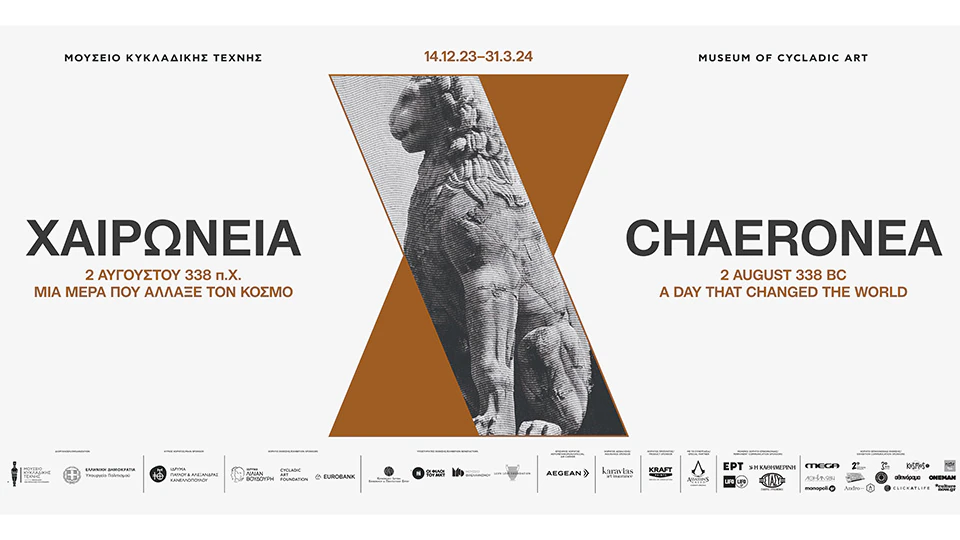Assassin's Creed Origins' Ptolemaic Egypt and Assassin's Creed Odyssey's Classical Greece are separated by nearly 400 years, but the two worlds are coming together in an exhibit at the Museum of Cycladic Art in Athens.
Titled Chaeronea, 2 August 338 BC: A Day That Changed The World, the exhibition centres on the decisive victory of the Macedonian army, under the leadership of its king, Philip II, over a coalition of Greek cities. The battle is the precise moment Philip II's son, Alexander (known more famously by his moniker Alexander the Great) enters the international political scene. The museum will highlight not only that particular day, but the events that preceded it and those that followed.
To learn more about how Assassin's Creed Origins and Assassin's Creed Odyssey play a role in the exhibition, we spoke with the exhibition's curator, Dr. Panagiotis Iossif.
Assassin's Creed Origins and Odyssey take place nearly 400 years apart. How can both games help illustrate the significance of a single day when neither game depicts it?
Panagiotis Iossif: That's exactly the fascinating thing with the battle of Chaeronea and its importance: a single day, a single battle that links together events separated by more than four centuries.
Assassin's Creed Odyssey is set a hundred years before the battle of Chaeronea. But the way Thebes and Boeotia are represented in the game is accurate enough to be used to illustrate and explain the historical setting moments before the battle. The victory of Philip II, King of Macedonia, established the Macedonian domination in continental Greece. It also paved the way for the conquests of his son, Alexander, who founded Alexandria seven years after the battle. Indeed, Alexander fought at Chaeronea, the first of his many victories.
The events of Assassin's Creed Origins take place 300 years after the battle. But again, the way Alexandria is portrayed in the game perfectly symbolizes the legacy of Alexander and the Macedonian victory at Chaeronea: the beauty and refinement of buildings such as the Lighthouse and the Library, the Canopic Way, and the Soma, Alexander's legendary tomb, are all tokens of the battle's heritage.
This is not the first time Assassin's Creed has partnered with a museum, as similar collaborations happened with the British Library and Ashmolean Museum. What value do you think Assassin's Creed brings to a museum setting?
PI: The main advantage of using Assassin's Creed in the framework of an exhibition is that the curators can bring life to ancient times. All the accuracy and research conducted for the development of Assassin's Creed games are an invaluable source of data and information to represent different periods of human history. Thus, the way Thebes is depicted in Assassin's Creed Odyssey helps the visitor of the exhibition imagine what people, cities, and lands might have looked like at the time.
The representation of Alexandria in Assassin's Creed Origins vividly illustrates all the positive
consequences of the Hellenistic world, which started after the battle of Chaeronea. Furthermore, the educational dimension of these video games makes the museum a friendlier place for audiences [who are] not necessarily drawn to archaeological exhibitions. It is a real challenge for curators to find the right balance between new technologies and archaeological artifacts. But tools like Assassin's Creed are an invaluable aid to our efforts to make museums more accessible to younger audiences.
What lesson or information do you hope visitors to the exhibition take from it?
PI: This is a tricky question. Someone said that objects in the exhibition have their own life once you put them on display. This means that they interact independently with each visitor. Also, every visitor has his or her own background. But, in an ideal scenario, I would expect Assassin's Creed to serve as a smooth introduction to the reality of what the exhibition illustrates: the period just before the battle of Chaeronea and its glorious outcome.
For more on how Assassin's Creed has partnered with museums, check out its collaboration with the British Library and Ashmolean Museum. To explore ancient Egypt and Greece yourself, head to the Ubisoft Store and pick of Assassin's Creed Origins and Odyssey.

